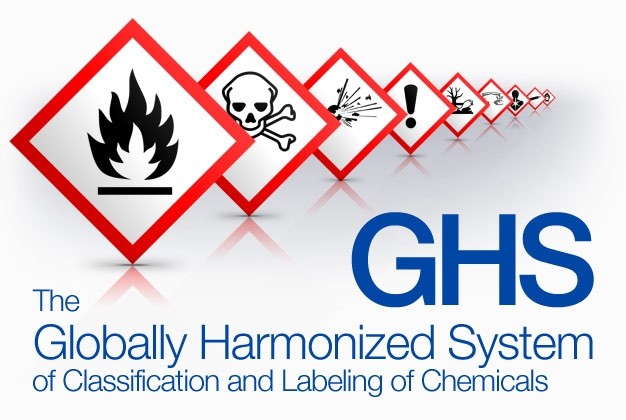GHS Globally-Harmonized System of Classification and Labeling of Chemicals

The Globally Harmonized System (GHS) for the classification and labeling of chemicals is a common criteria for classifying chemicals and communicating hazards on labels and safety data sheets. The need for GHS has been endorsed in the United Nations Conference on Environment and Development (UNCED) in 1992, in the World Summit on sustainable Development (WSSD) in 2002 and by the Intergovernmental Forum on Chemical Safety (IFCS). The IFCS and WSSD have set a goal of 2008 for its implementation. Subsequently, a Joint DTI-DENR-DA-DOF-DOH-DILG-DOLE-DOTC Administrative Order No. 1, Series 2009 titled, "The Adoption and Implementation of the Globally Harmonized System of Classification and Labelling of Chemicals (GHS)" was signed on May 25, 2009.
The GHS is a basis for establishing a comprehensive national chemical safety program and comprehensive approach to defining and classifying hazards and communicating information on labels and safety data sheets.
When did the GHS start? The GHS was developed in Agenda 21 of the United Nations Conference on Environment and Development (UNCED) held in Brazil 1992.
"A globally harmonized hazard classification and compatible labelling system, including material safety data sheets and easily understandable symbols, should be available, if feasible, by the year 2000." - UNCED Agenda 21, Chapter 19
What are the benefits of GHS? All countries, international organizations, chemical producers, and users of chemicals will benefit from the GHS since it will:
Where will the GHS apply?
Who should work on the implementation of GHS?
- uc762627ade5908c125e28f9707fedea18.jpg
The GHS is a basis for establishing a comprehensive national chemical safety program and comprehensive approach to defining and classifying hazards and communicating information on labels and safety data sheets.
When did the GHS start? The GHS was developed in Agenda 21 of the United Nations Conference on Environment and Development (UNCED) held in Brazil 1992.
"A globally harmonized hazard classification and compatible labelling system, including material safety data sheets and easily understandable symbols, should be available, if feasible, by the year 2000." - UNCED Agenda 21, Chapter 19
What are the benefits of GHS? All countries, international organizations, chemical producers, and users of chemicals will benefit from the GHS since it will:
- enhance the protection of humans and environment
- facilitate international trade in chemicals
- reduce the need for testing and evaluation of chemicals
- assist countries and international organizations to ensure the sound management of chamicals
Where will the GHS apply?
- all hazardous chemical substances, dilute solutions and mixtures except at the point of intentional intake in terms of labeling of pharmaceuticals, food additives, cosmetics and pesticide residues in foor. But these are also covered by GHS if workers maybe exposed and in transport.
Who should work on the implementation of GHS?
- Government will provide the legal and institutional infrastructure and build capability on GHS
- Industry will Apply the classification and labeling requirements and are also responsible for training and providing the safety data sheets
- Civil Society will conduct training and awareness-raising activities and could work with government to formulate legilations.
References
Occupational
Safety
and
Health
Center
http://www.osch.dole.gov.ph
http://workplace-safety.net/wp-content/uploads/2012/06/GHS.jpg